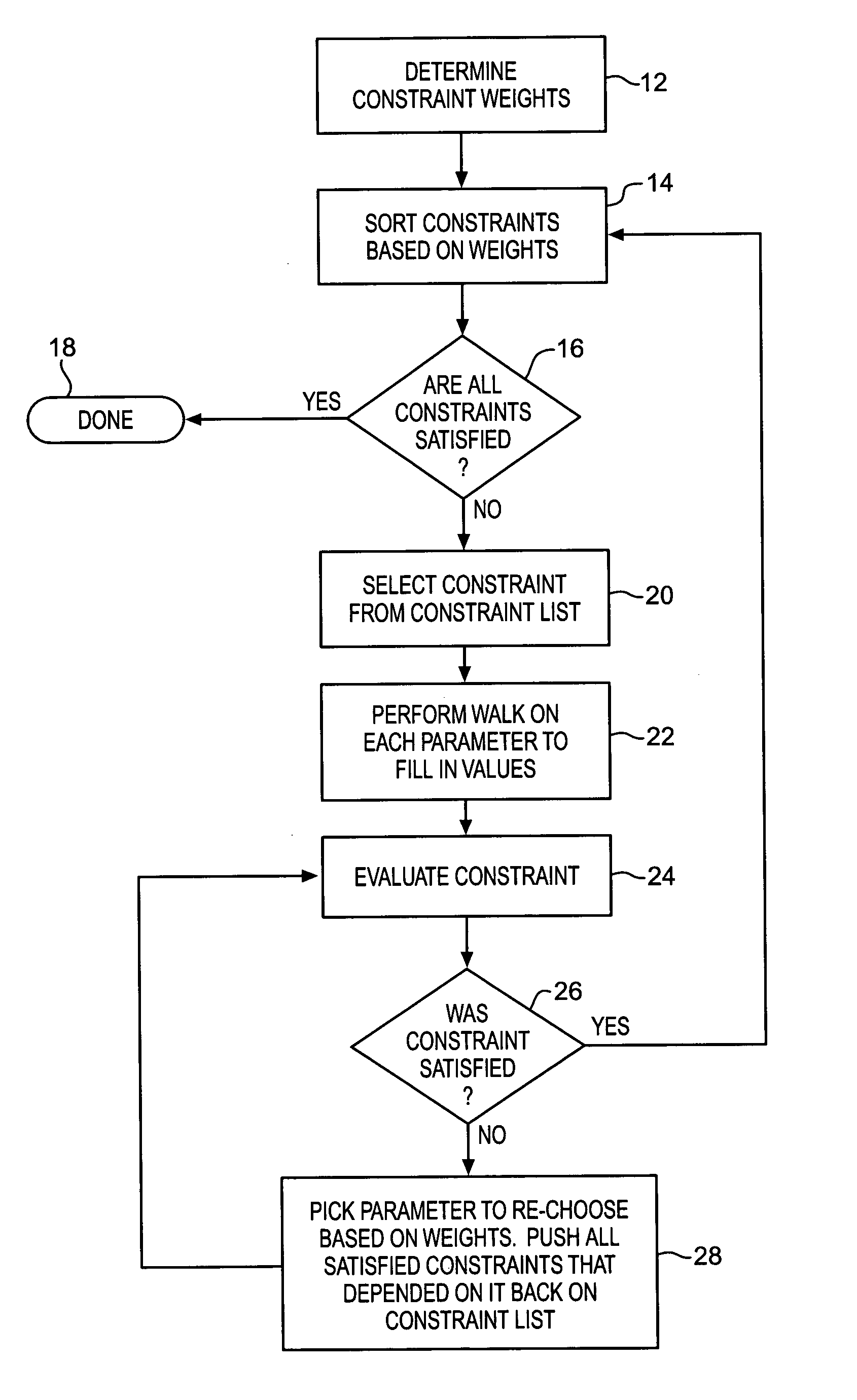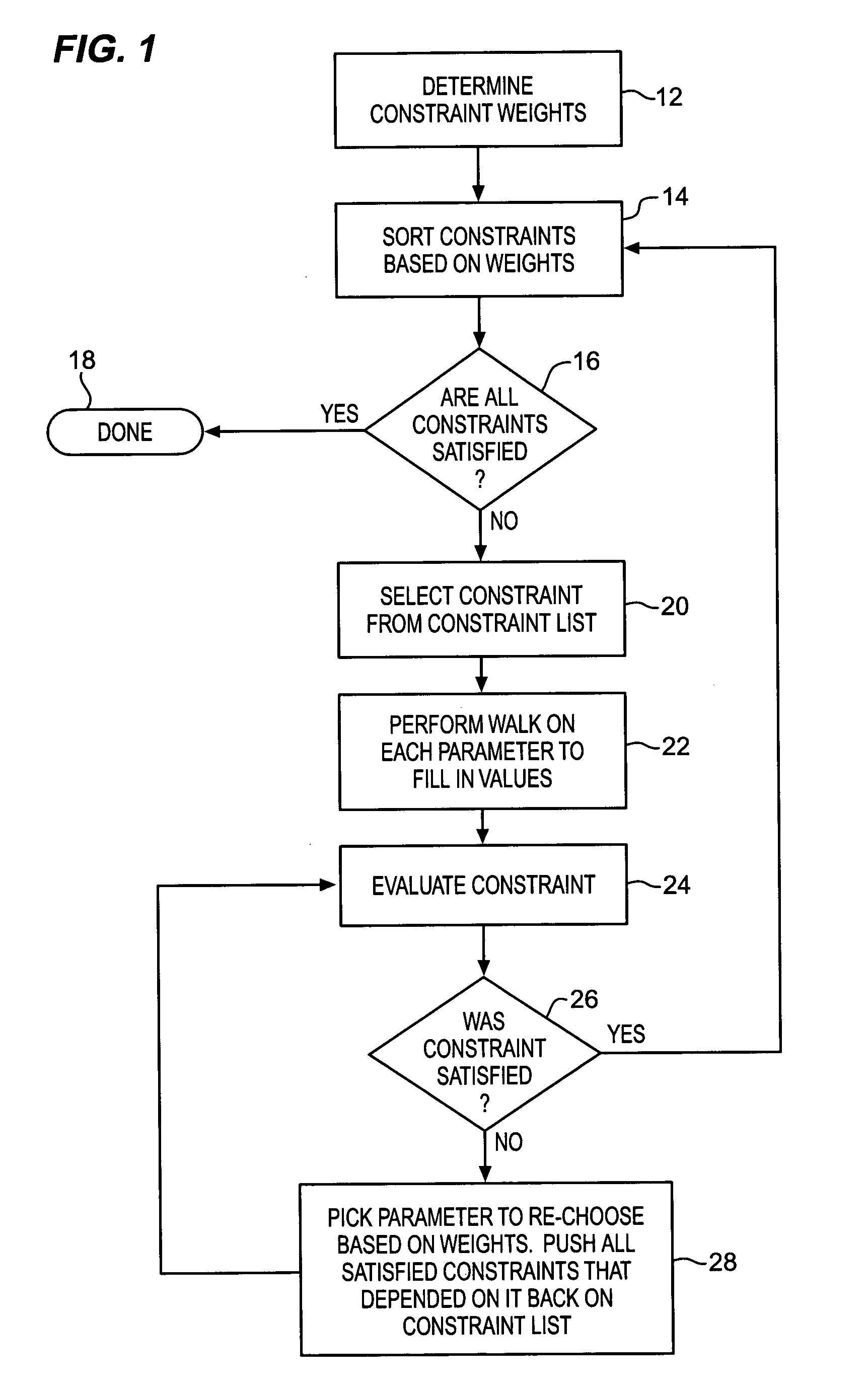Solutions for constraint satisfaction problems requiring multiple constraints
a constraint and satisfaction problem technology, applied in the field of solving constraint satisfaction problems, can solve problems such as limiting flexibility in describing problems, increasing the processing power of csp, and increasing the complexity of csp
- Summary
- Abstract
- Description
- Claims
- Application Information
AI Technical Summary
Benefits of technology
Problems solved by technology
Method used
Image
Examples
Embodiment Construction
[0016]A classical constraint satisfaction problem (CSP) has at least three components, a set of parameters, domains for the parameters and a set of constraints. The constraint satisfaction solver attempts to find a set of complete solutions which are an assignment of values to the parameters that satisfy all of the constraints. A CSP solver can use a specification language to describe the parameters, domain values, and constraints. This specification language can provide semantics for the specifications of these values.
[0017]According to one embodiment of the invention, XML (extensible mark-up language) can be used to specify all of these constraints, parameters, and domain values using XML tags. The domains assign a set of possible values to a parameter. In this way, the values within a domain can become constraints in and of themselves. Using XML tags as a specification language, allows domains to be of different independent data types. These data types can include floating point ...
PUM
 Login to View More
Login to View More Abstract
Description
Claims
Application Information
 Login to View More
Login to View More - R&D
- Intellectual Property
- Life Sciences
- Materials
- Tech Scout
- Unparalleled Data Quality
- Higher Quality Content
- 60% Fewer Hallucinations
Browse by: Latest US Patents, China's latest patents, Technical Efficacy Thesaurus, Application Domain, Technology Topic, Popular Technical Reports.
© 2025 PatSnap. All rights reserved.Legal|Privacy policy|Modern Slavery Act Transparency Statement|Sitemap|About US| Contact US: help@patsnap.com



